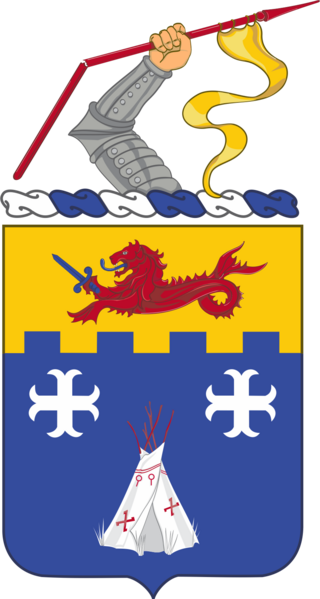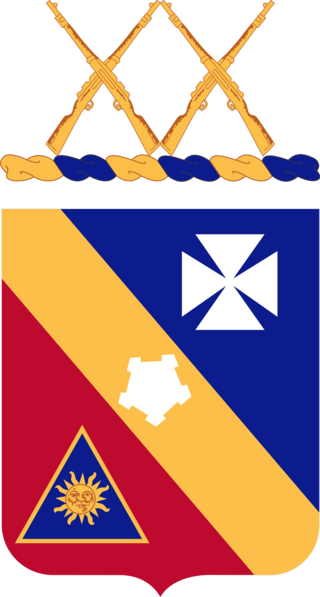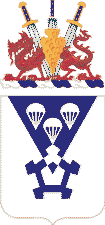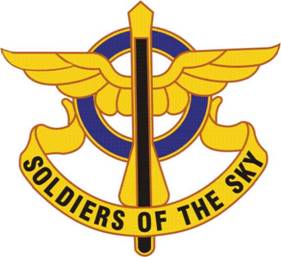The 2nd Brigade Combat Team, 1st Infantry Division, also known as the Dagger Brigade, is a maneuver brigade combat team in the 1st Infantry Division of the U.S. Army stationed in Fort Riley, Kansas.
The 12th Cavalry is a cavalry regiment of the United States Army. It is currently stationed at Fort Cavazos, formerly known as Fort Hood.

The 12th Infantry Regiment is a unit of the United States Army. The 12th Infantry has fought in seven wars from the Civil War to the Global War on Terrorism and has been awarded 19 Presidential Unit Citations, five Valorous Unit Awards, a Joint Meritorious Unit Award, two citations in the Order of the Day of the Belgian Army, Nine Republic of Vietnam Crosses of Gallantry, the Republic of Vietnam Civil Action Honor Medal Third Class, a Meritorious Unit Commendation, and the Belgian Fourragere.

The 14th Infantry Regiment is a United States Army light infantry regiment. It has served in the American Civil War, Boxer Rebellion, World War II, Korean War, Vietnam War, Operation Restore Hope, Operation Uphold Democracy, Operation Joint Guard, Operation Desert Storm, Operation Enduring Freedom, Operation Gothic Serpent, Operation New Dawn, Operation Resolute Support, and Operation Iraqi Freedom. The 14th Infantry Regiment did not take part in combat during World War I. It has also conducted peacekeeping and humanitarian missions in the Sinai Peninsula, Guantánamo Bay in Cuba, Bosnia, and Kosovo.

The 1st Battalion, 227th Aviation Regiment is an attack helicopter battalion of the Combat Aviation Brigade, 1st Cavalry Division. The battalion is an AH-64 Apache battalion based at Fort Cavazos, Texas.

The 8th Cavalry Regiment is a regiment of the United States Army formed in 1866 during the American Indian Wars. The 8th Cavalry continued to serve under a number of designations, fighting in every other major U.S. conflict since, except World War I, when it was not deployed to Europe because it was already engaged in the Punitive Expedition in Mexico from 1916 to 1920. It is currently a component of the 1st Cavalry Division.

The 2nd Infantry Regiment is an infantry regiment in the United States Army that has served for more than two hundred years. It was constituted on 12 April 1808 as the 6th Infantry and consolidated with 4 other regiments in 1815 to form the present unit.

The 20th Infantry Regiment is a United States Army infantry regiment. Currently only the 5th Battalion of the 20th Infantry still exists. Stationed at Joint Base Lewis-McChord and part of the 1st Stryker Brigade Combat Team, 2nd Infantry Division, 5-20 Infantry was one of the original battalions selected to take part in the testing and fielding of the U.S. Army's then-new Stryker vehicle. During the Vietnam War, elements of the regiment carried out the My Lai massacre.

The 2nd Battalion, 503rd Infantry Regiment is an active duty airborne infantry battalion in the United States Army, assigned to the 173rd Airborne Brigade Combat Team and stationed at Caserma Del Din, Vicenza, Italy. The battalion has served with the 2nd Infantry Division, the 11th Airborne Division, the 24th Infantry Division, The 25th Infantry Division, the 82nd Airborne Division, the 101st Airborne Division, and the 173rd Airborne Brigade; has been stationed in Korea, Germany, Italy and the United States; and earned campaign credits in World War II, the Vietnam War, Operation Enduring Freedom—Afghanistan, and Operation Iraqi Freedom.

The 1st Battalion, 21st Field Artillery was a field artillery battalion of the United States Army based in Fort Hood, Texas. It was a subordinate unit of the 41st Fires Brigade.

The 34th Armor Regiment is an armored regiment of the United States Army formed in 1941.
The 67th Armored Regiment is an armored regiment in the United States Army. The regiment was first formed in 1929 in the Regular Army as the 2nd Tank Regiment (Heavy) and redesignated as the 67th Infantry Regiment (Medium Tanks) in 1932. It first became the 67th Armor in 1940. The regiment participated in World War I, World War II, Desert Storm/Desert Shield, Operation Iraqi Freedom, Operation Enduring Freedom, Operation Spartan Shield, Operation Inherent Resolve, Operation Resolute Support, and Operation Freedom's Sentinel.

The 4th Aviation Regiment is an aviation regiment of the United States Army, tracing its history back to 1957.

The 6th Field Artillery Regiment is a Field Artillery Branch regiment of the United States Army first activated in 1907 from numbered companies of artillery. It was first organized with two battalions.

The 77th Field Artillery Regiment is a field artillery regiment of the United States Army. First constituted 1916 in the Regular Army as a cavalry regiment. Reorganized in 1917 as field artillery and given its current designation.

The 10th Aviation Regiment is an aviation regiment of the U.S. Army.

The 1st Squadron, 1st Cavalry Regiment is the BCT cavalry squadron assigned to the 2nd Brigade Combat Team, 1st Armored Division. Carrying the lineage of Company A, United States Regiment of Dragoons, the squadron has served in the Mexican War, Civil War, various Indian Wars, the Spanish–American War, the Philippine Insurrection, World War II, Vietnam, and the Global War on Terrorism.
The 1st Cavalry Division Artillery (DIVARTY) or "Red Team" is the Force Field Artillery Headquarters for the 1st Cavalry Division. The DIVARTY served with the division from 1941 to 2005, including combat service in World War II, the Korean War, the Vietnam War, Operations Desert Shield and Desert Storm, and Operation Iraqi Freedom and in peacetime in Japan, Korea, and Fort Hood, Texas. As the Force Fires Headquarters, the DIVARTY provides fire support coordination and mission command for the training and readiness of field artillery units across the division.

The 101st Airborne Division Artillery (DIVARTY) is the force fires headquarters for the 101st Airborne Division at Fort Campbell, Kentucky. The DIVARTY has served with the division in World War II, Vietnam, Operations Desert Shield and Storm, Operation Iraqi Freedom, and in peacetime at Camp Breckinridge and Fort Campbell, Kentucky, and Fort Jackson, South Carolina. The DIVARTY was inactivated in 2005 as part of transformation to modular brigade combat teams, but was reactivated on 16 October 2014 to provide fire support coordination and mission command for the training and readiness of field artillery units across the division.

The 1st Battalion, 503rd Infantry Regiment is an active duty airborne infantry battalion in the United States Army, assigned to the 173rd Airborne Brigade Combat Team and stationed in Vicenza, Italy. The battalion has served with the 2nd Infantry Division, the 11th Airborne Division, the 24th Infantry Division, the 82nd Airborne Division, and the 173rd Airborne Brigade; has been stationed in Korea, Italy and the United States; and earned campaign credits in World War II, the Vietnam War, Operation Enduring Freedom-Afghanistan, and Operation Iraqi Freedom.















